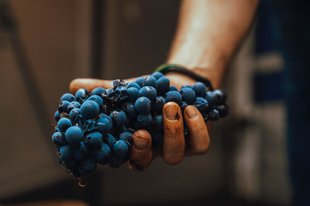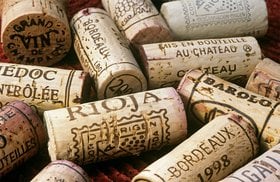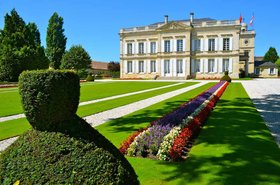Château Pavie: Winemaking, Best Wines to Buy (2025)
Curious to learn the secrets held in the deep purple hues of Chateau Pavie wine?
Château Pavie is a Right Bank Bordeaux winemaker known for its powerful, concentrated red blends. Though Chateau Pavie has existed since the 1870s, its fame soared only in the last few decades.
How did this Chateau propel itself into the limelight? What makes its wine sought-after?
In this article, we’ll look into the changes that have occurred at Chateau Pavie, as well as its best vintages, investment potential, and the easiest way to invest in it.
Further reading
- Explore the many Smart Ways You Can Invest In Wine.
- Explore some of the fascinating reds like the traditional Merlot or the Italian Moscato d’Asti.
A Quick Look at Château Pavie, the Château of “Peaches”

Named after the peaches (“pavie”) that once grew on its grounds, Chateau Pavie is located in the Saint Emilion appellation of Bordeaux in France. It is currently owned by the business magnate Gerard Perse.
The red wine grapes Merlot, Cabernet Sauvignon and Cabernet Franc from its vineyard go into creating its two wines — the Chateau Pavie Grand Vin and Aromes de Pavie.
Let’s see how its story began in the late 1800s.
A Brief History of Château Pavie
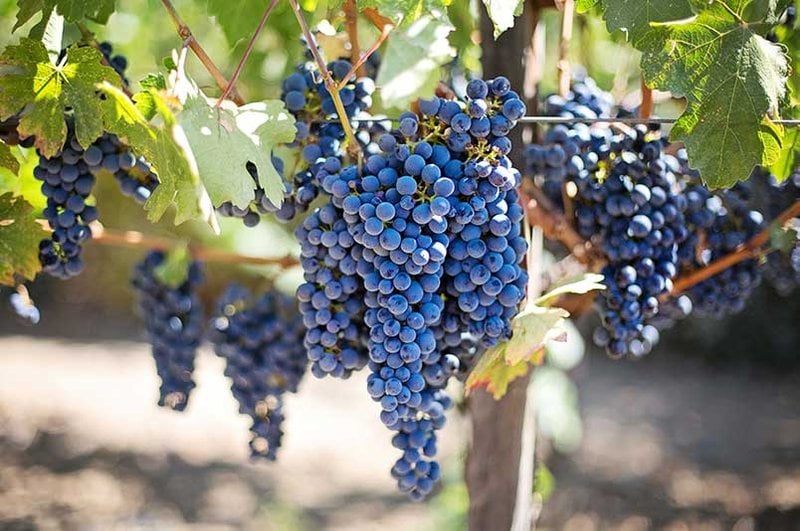
The Romans had cultivated the slopes of what would become Chateau Pavie since the 4th century. But the vineyard wasn’t well known until close to two millennia later.
In the late 19th century, Bordeaux négociant Ferdinand Bouffard assembled several plots bought from different families into a 50-hectare vineyard — making Chateau Pavie one of the largest Right Bank estates.
Bouffard eventually sold the estate to Albert Porte at the end of the First World War. But Porte didn’t hold onto the estate for long, relinquishing ownership to the Vallette family in 1943.
Chateau Pavie’s quality was already recognized by the mid-20th century, and it was ranked Premier Grand Cru Classé B in the 1954 classification of Saint-Émilion.
But it was yet to achieve its true potential.
In 1998, Parisian millionaire Gerard Perse, who also owned nearby Château Pavie-Decesse and Château Monbousquet, bought Chateau Pavie from the Valette family for $31 million.
Perse initiated a renaissance of Chateau Pavie, renovating and modernizing the entire estate.
Perse also brought in wine consultant Michel Rolland, who reduced yields with severe pruning and green harvesting, and encouraged malolactic fermentation of the wine. These efforts created a wine that was much more intense and concentrated than earlier vintages.
This new, improved wine didn’t go unnoticed when Saint Emilion updated its classification.
Also read: Relish a bottle of delicious Champagne, or turn it into a refreshing Mimosa or fruity Sangria!
Château Pavie’s Elevation to Premier Grand Cru Classé A

When the Saint-Emilion wine classification was created in 1955, the coveted Premier Grand Cru Classe A status was given only to two estates - Château Cheval Blanc and Château Ausone. No one really expected this to change.
Saint Emilion appellation updates this classification every decade.
When the 2012 classification was declared, Chateau Pavie and Chateau Angelus were elevated to Premier Grand Cru Classé A, joining the previous two chateaux.
This hike in status meant that Chateau Pavie now occupied the lofty upper echelon where the First Growths of Bordeaux and Grand Cru Domaines of Burgundy basked. This change is reflected in the wines’ release prices as well as demand!
Great wine starts in the vineyard. Let’s take a look at the terroir of this Bordeaux wine.
The Vineyard and Grapes of Château Pavie
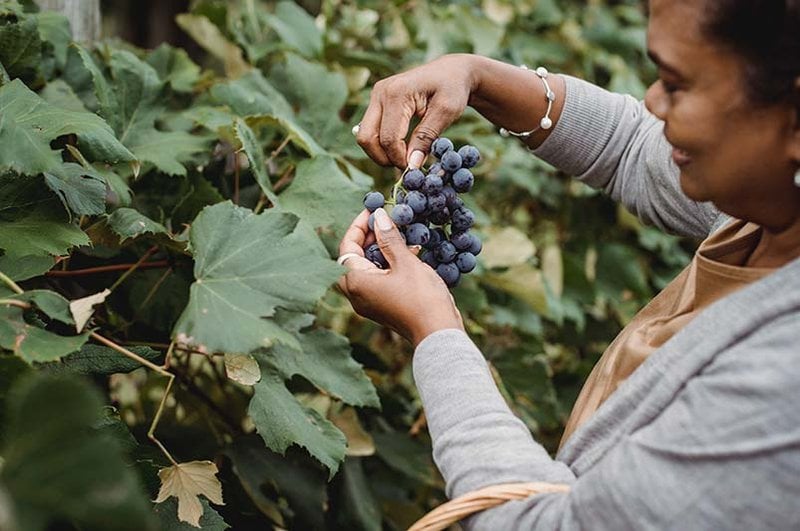
The current Chateau Pavie vineyard is 37 hectares and is a single large block, making it quite unique in St Emilion. It also has the highest elevation in St Emilion.
Within this large block, the vineyard can be divided into three distinct terroirs:
- At the top, around 85m above the Dordogne river, sits the limestone plateau with its white limestone soil (starfish limestone.)
- Along the hillside is the heavy clay limestone soil, a finely-textured brown limestone on Fronsadais molasse.
- At the foothill is a mix of brown limestone, sands, and large-grained soils.
This exceptional terroir is hugely favorable to vine cultivation — with its naturally poor soil, slopes that promote good drainage, and excellent sunshine.
The vineyard is planted with 60% Merlot grapes, 25% Cabernet Franc and 15% Cabernet Sauvignon. It’s usually one of the last estates to complete harvesting, as the climate isn’t conducive to early ripening of the fruit.
Sustainable vineyard management techniques are employed, where 70% of the vineyard is farmed through organic methods. The aim is to become 100% organic.
Next, let’s look at Chateau Pavie’s winemaking approach.
- Read more: Uncover more of Bordeaux by reading about Right Bank Pomerol Wine. Or hop on over to Italy for the luscious Wines of the Chianti Region.
- Find out more about French wine through these guides on exquisite Chateauneuf du Pape or the Chardonnays of Pouilly-Fuisse.
Winemaking at Château Pavie

Vinification takes about three weeks once the grapes are thoroughly selected and pressed. This occurs in 20 temperature-controlled wooden vats, where the wine is kept on the skins.
Malolactic fermentation takes place in the barrel. The wine is then aged in 70%-100% new oak for 18-32 months.
The Chateau Pavie Grand Vin is a blend of 65% Merlot, 25% Cabernet Franc and 10% Cabernet Sauvignon, with grapes from vines that average 43 years old. Annual production of this wine totals around 70,000 bottles.
The second wine, Aromes de Pavie, was released in 2005, replacing Chateau Tour Simard.
The grape variety for the Aromes de Pavie blend is 70% Merlot, 20% Cabernet Franc and 10% Cabernet Sauvignon, from vines less than 10 years old. About 30,000 bottles of this second wine are produced yearly.
From the 2010 vintage, every Chateau Pavie bottle and label has a lock slip on the capsule with a unique code — as part of their anti-counterfeit measures.
The code matches an identical number on the bottle with the date the wine was bottled and labeled at Chateau Pavie.
Further reading:
- Read about how Malbec Wine went being French to Argentinian, or the universally beloved Sauvignon Blancwine.
- Also, check out the most approachable, sassy California Zinfandel and sweet German Riesling to buy in 2024.
So, which vintages should you keep an eye out for?
The Irresistible Wines of Château Pavie to Buy in 2024
Here are some of the highly-rated, expressive wines from this stylish chateau.
1. Château Pavie 2000, Saint-Emilion Grand Cru
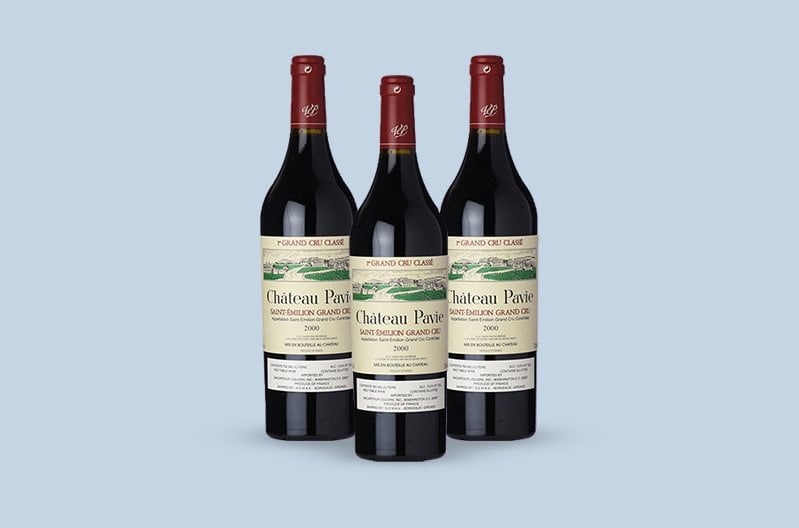
The 2000 vintage was the first Chateau Pavie to receive the coveted 100-point score from Robert Parker.
This exceptional vintage is concentrated, with a wealth of fruit coupled with stony minerality and abundant tannin levels for further aging. There are nuances of ripe, fresh cherry, and plum, accompanied by licorice, flowers, oak, crushed rock, smoke, and spice. Drink between 2006-2055.
Price of 2000 Château Pavie St Emilion Grand Cru: $710+
2. Château Pavie 2005, Saint-Emilion Grand Cru
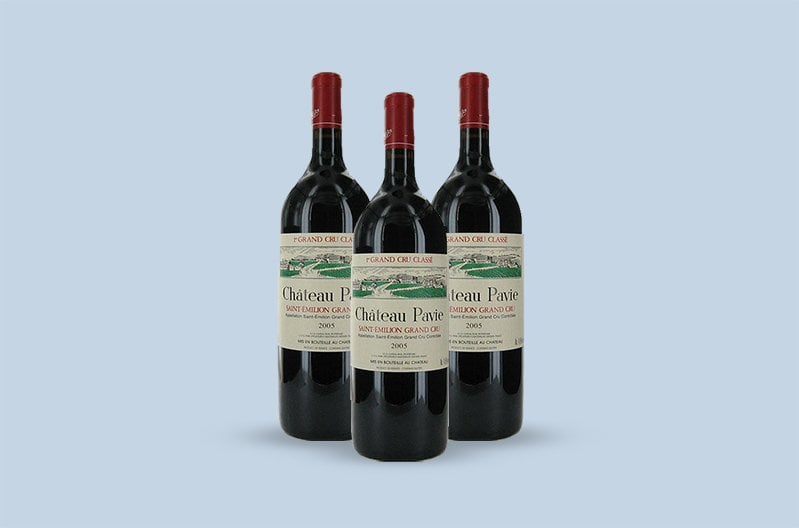
Chateau Pavie 2005 is intense, vibrant, and concentrated, packed with layers of ripe fruit. There is depth and length to the wine, tasting of spice, wood, oak, coffee, and dark berries.
The 2005 vintage received 100 points from both Robert Parker and Wine Spectator. Drink between 2010-2120.
Price of 2005 Château Pavie St Emilion Grand Cru: $490+
3. Château Pavie 2015, Saint-Emilion Grand Cru

The 2015 Pavie is full-bodied with ultra fine tannin levels. It displays evocative aromas of wet earth, oyster shell, cassis, dust, blue fruit complementing black cherry and boysenberry.
Opulent and harmonious, tasting of dark chocolate and spices, it finishes with length and intensity. Drink between 2024-2045.
Price of 2015 Château Pavie St Emilion Grand Cru: $410+
4. Château Pavie 2016, Saint-Emilion Grand Cru
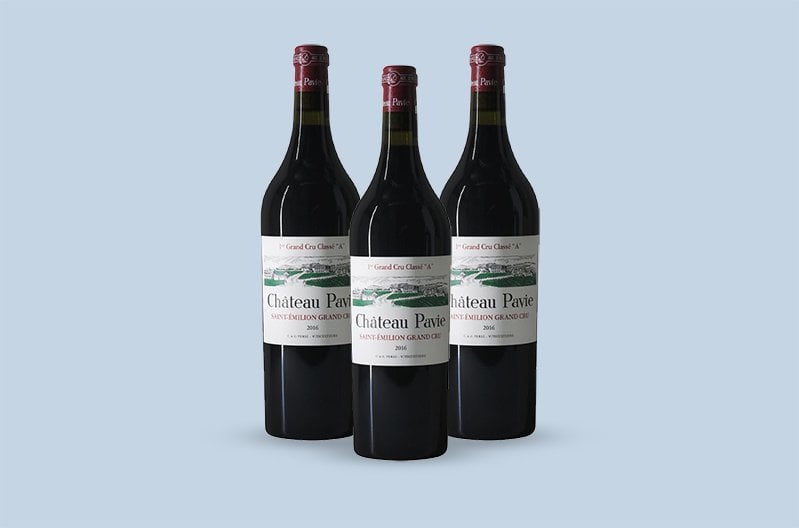
The incredible Pavie 2016 unfurls with fragrant aromas of violets, raspberry, and boysenberry. There are notes tasting of cherries, crushed berries over a core of preserved plums, kirsch, and crème de cassis.
Full-bodied and firm, its ripe, grainy tannins and seamless freshness interknit with the black fruit preserves, finishing long and decadent. Drink from 2021 to 2070.
Price of 2016 Château Pavie St Emilion Grand Cru: $490+
5. Château Pavie Les Arômes de Pavie 2015, Saint-Emilion
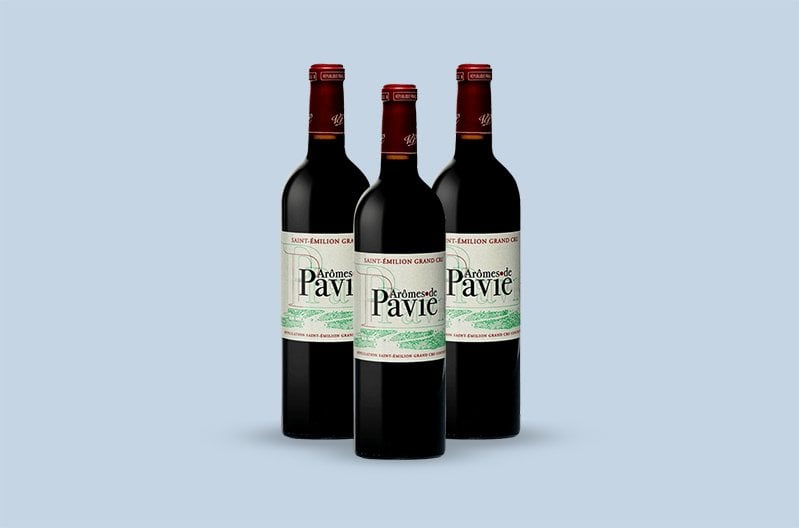
The 2015 Aromes de Pavie is a deep garnet-purple, with a beguiling nose of smoked meats, fragrant earth, sautéed herbs over a core of red and black plums, cherry compote, and dried lavender.
The medium to full-bodied palate reveals fine, ripe tannins plus a seamless backbone of freshness, finishing long with restraint and elegance. Drink from 2020 to 2034.
Price of Château Pavie Les Arômes de Pavie 2015: $100+
6. Château Pavie Les Arômes de Pavie 2016, Saint-Emilion

Aromes de Pavie 2016 has a powerful and voluminous bouquet of ripe black cherries, blueberry and a dash of black pepper.
The full-bodied palate has a firm grip in the mouth, displaying weight and concentration. Drink between 2018-2038.
Price of Château Pavie Les Arômes de Pavie 2016: $110+
What’s the best way to enjoy this rich Bordeaux blend?
Also read: Take a sip of the fruity Barbera wine from Piedmont, or the lighter, easy-drinking Barbera d’Asti.
Serving and Pairing Food with Château Pavie

Younger vintages of Chateau Pavie may need 3-4 hours of decanting to allow the wine to soften and unfurl its aromas. Older vintages need less decanting, just enough to remove sediment.
Serve this deep-colored wine at 15.5oC (60oF) - the cool temperature (akin to a cellar) gives the wine more freshness. Match it with classic meat dishes like roast chicken, turkey, or goose, and truffle omelets.
- Also read: Find out about the classic Kir Royale and other fantastic Champagne Cocktails to serve.
- A bottle of Chateau Pavie would make an exclusive Wine Gift.
Now, is Chateau Pavie a good long-term investment?
Need more gift ideas?
- A fine set of Champagne Glasses with a bottle of Rose or Pinot Blanc would surely make any wine lover happy.
Investing in Château Pavie
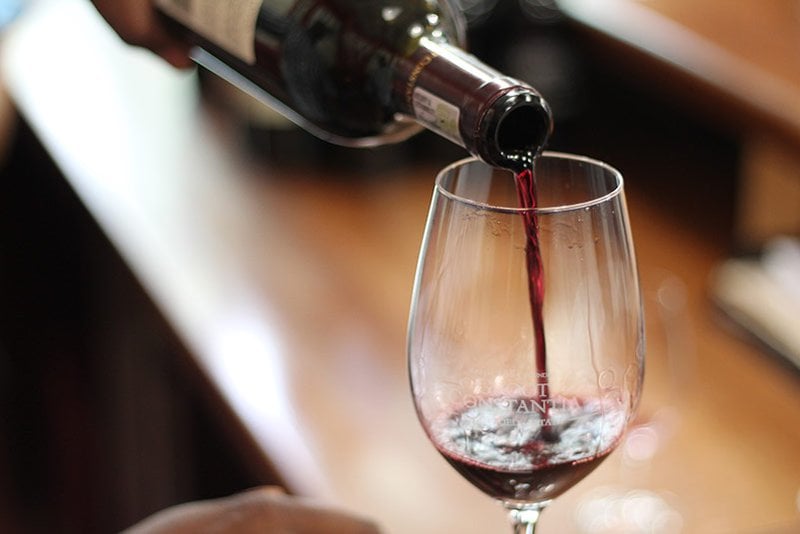
Chateau Pavie combines power, concentration, and elegance with the potential to age for decades. It reaches peak maturity and is best to drink between 15-40 years after the vintage.
Most of Chateau Pavie’s vintages in the last two decades have garnered high praise among critics, though there was one incident involving the 2003 vintage that drew controversy. It received a less-than-flattering tasting note from wine critic Jancis Robinson, which led to a heated exchange of words with Robert Parker of Wine Advocate.
Which are the best Chateau Pavie vintages to buy?
2019, 2018, 2017, 2016, 2015, 2014, 2012, 2010, 2009, 2008, 2006, 2005, 2004, 2003, 2002, 2001, 2000 and 1998. Note that vintages before 1998 were produced in a different style and didn’t have the same aging potential as those after.
Chateau Pavie price appreciation
Chateau Pavie’s quality has significantly improved over the last two decades. This has driven demand and generated higher valuations in the en primeur releases as well as back vintages.
Pavie 2000 was released at $1700 per case (this vintage received 100 points from Robert Parker.) In 2021, it costs around $710 per bottle.
We can expect excellent vintages like the 2010, 2016, or 2019 to perform similarly. Though prices may plateau as the wines stay quietly in their cellar, they’ll appreciate as they approach their drinking window.
Chateau Pavie is a slow-maturing wine from winemakers who are invested in continuous improvement - and it makes a great addition to a diverse, long-term portfolio.
However, buying a Chateau Pavie might involve a bit of hassle, from finding the best prices, handling authentication, insurance, and storage.
Is there a shortcut to all of this?
Vinovest can manage all those details for you. Imagine buying Château Pavie or a Left Bank Chateau Lafite from the comfort of your home, with just a few clicks of your mouse!
Buy Château Pavie and Other Great Wines Through Vinovest
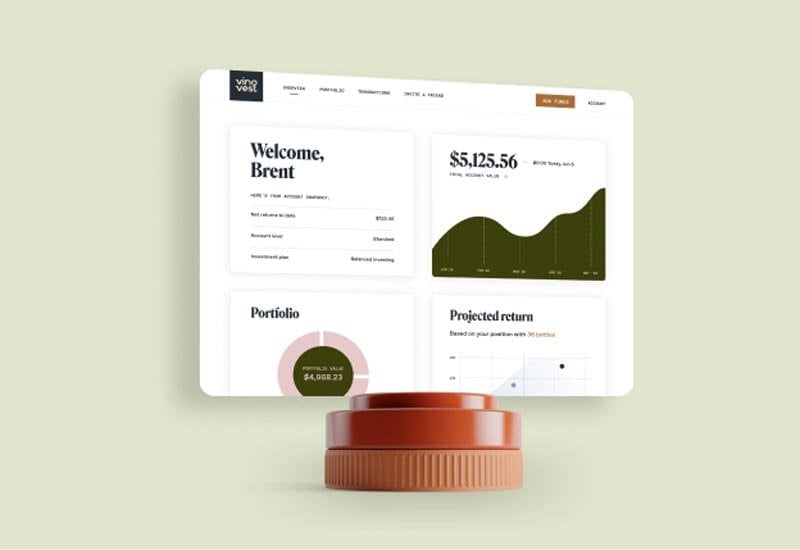
Vinovest is an online wine investment company that offers you a lucrative and safe way to invest in fine wine — and that includes any wine from anywhere in the world.
What do you need to do?
How it works
Follow these four simple steps:
- Sign up
- Fill a questionnaire to inform Vinovest of your risk appetite and investment preferences.
- Fund your account (a minimum of $1,000).
- Monitor your wine portfolio online!
Benefits
Here are some of the pluses of investing through Vinovest:
1. Easy buying and selling
Vinovest's Artificial Intelligence-based online platform lets you buy and sell the finest and rarest of wines with just a few clicks.
2. Provenance and authenticity
Vinovest goes the extra length to authenticate your wine and trace its provenance.
3. Curated portfolio
Vinovest's team of Master Sommeliers will oversee the selection of wines that go into your investment portfolios.
4. Optimal storage and security
Your wines are stored in bonded warehouses located close to some of the world's best wine regions. Your bottles are safely kept in optimal storage conditions with 24/7 monitoring.
5. Insurance
Vinovest offers a full insurance policy at market value, protecting each bottle against breakage, theft, and loss.
6. Low Overall Costs
Vinovest charges lower fees than many other wine investment firms — a 2.85% annual fee (2.5% for a portfolio of above $50,000.) This fee includes wine purchases, storage, fraud detection, insurance, portfolio management, and selling.
7. Access to a global network
Through Vinovest, you get access to an extensive wine network, upcoming vineyards, private sales of wine companies, and limited releases of new wines.
8. Ownership
Any wine you buy through Vinovest is yours.
9. Easy delivery
No worries about deliveries. Vinovest delivers to your doorstep. And if you're selling, Vinovest delivers the bottles safely to your buyer too.
Chateau Pavie: The St Emilion Superstar

Chateau Pavie is the type of wine that leaves a lasting impression. Its deep, dark hues and rich, concentrated taste speak of a wine that requires patience if you want to experience its true personality. This is a wine that shouldn’t be rushed.
Diversify your collection with this eloquent wine and let it age gracefully in your cellars.
Sign up with Vinovest today, and add a Chateau Pavie and other rare bottles to your wine portfolio!
